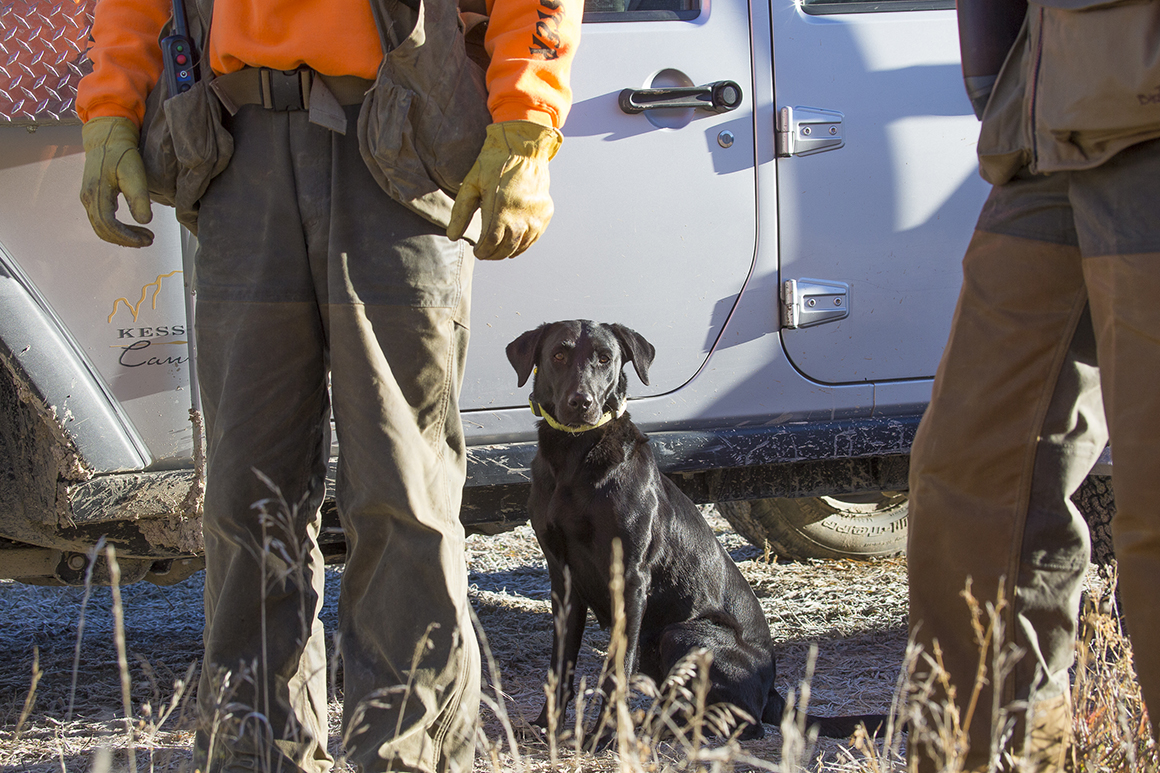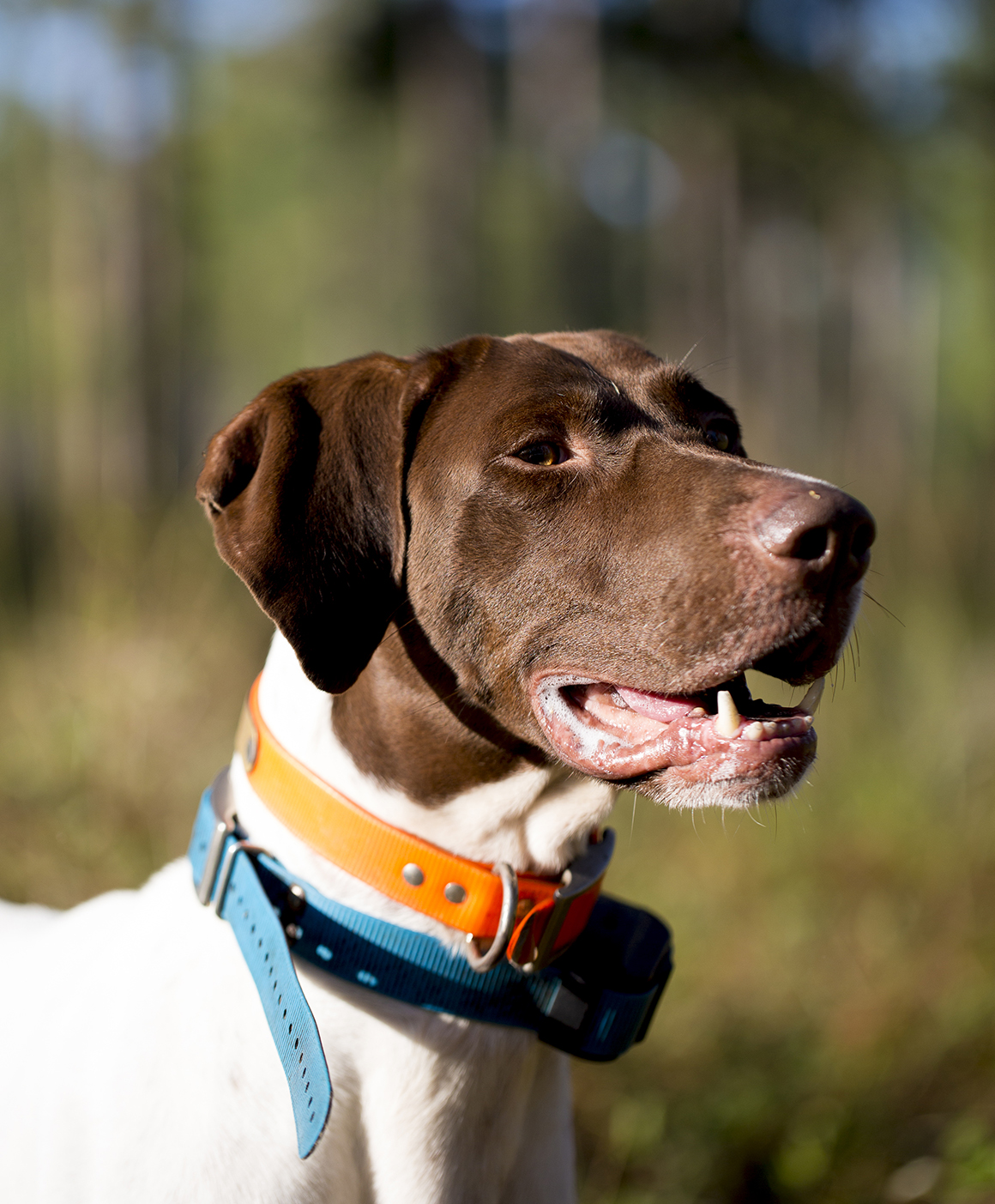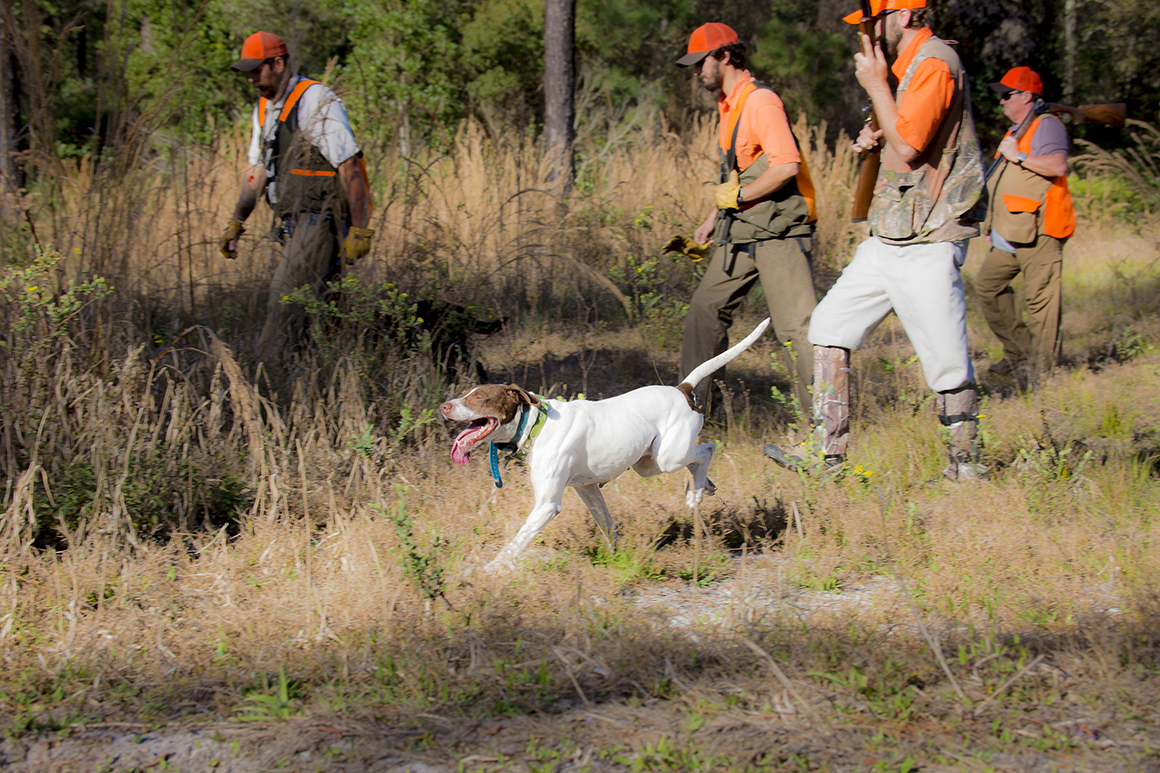Every Dog Has Its Day
If you were tasked with creating Heaven for an upland retriever or flushing dog, it would probably be a lot like a cut cornfield in pheasant country in the fall. A dog would get to be with other dogs and with people. It could quarter and crash and come upon somany wonderful smells; large piñata-colored birds would explode skyward from under its nose, and guns would go bang!Birds would fall, and the dog could run to them and pick up their warm feathered bodies and trot proudly back. The bird’s head and neck bobbing loosely, to that human who sets out the food dish for it morning and evening, and hear “Good dog!” when it drops a bird at that human’s feet and get some rough petting behind the ear. At night it would sleep deeply at the foot of the human’s bed, running after the birds in its dreams, the next morning bringing another hunt, just different enough from the one before to be paradise.


Hunting pheasants, you may think your dog is there for you; but anybody with a lick of sense knows that you are there for your dog. As much as you love hunting ringnecks, your dog loves it much, much more. And that is the biggest pleasure of pheasant hunting, seeing all the pleasure your dog gets out of it.
The greatest concern, bar none, of hunters taking their dog into the field with other folks is that their dog is going to turn them into laughingstocks. And the universal advice that is always given, for preventing that, is that you need to be sure your dog is “well behaved.” What that means, though, is open to interpretation, and can give a hunter conniptions about bringing his dog.
“Well behaved” for some hunters is nothing short of field-trial-ribbon trained, while other hunters seem to tolerate almost any “ain’t-that-cute?” hijinks. The dog probably has more to do with achieving the former, while the latter, let’s face it, is entirely pilot error. The two conditions are bookends, one aspirational and likely unreachable, and other to be avoided. It isn’t all that complicated in the end: Your dog should sit, stay, and come when you tell it to. It shouldn’t chew any bird to tatters when it picks it up and it ought to be enough of an upright citizen not to pick fights. As a last resort, do you have a leash and/or an electronic collar? If so, then bringing Fido along should cause no worries. On-the-job training among patient fellow hunters and dogs can work wonders.

The fact is, a dog in a pheasant field is much more likely to show good manners than will far too many hunters. We seem to cluster all our concentration on the ways our dogs act without paying attention to how we behave toward our and others’s dogs. For a dog to learn etiquette, his human has to look to his own etiquette first.
Have water with you in the field. Don’t shout, don’t plead, don’t keep repeating the same command. If your dog doesn’t respond to your voice or whistle, do something. Some hunters have mixed feelings about an electronic collar because they think of it as an implement of torture, when it’s really a doorbell to get the dog’s attention. Many collars have widely adjustable power settings, starting at a slight tickle, and even have ones for only audio tone or vibration. A lot of the time, when a dog has learned what the collar is all about, just putting one around its neck is enough to keep it alert to your wishes (strap the collar comfortably tightly high up on the dog’s neck so it won’t slide down and the electrodes lose contact). To adjust the collar, start at the lowest setting, toggle it, and see if the dog reacts. If not, raise it up a second increment and repeat, increasing it until the dog notices it. That’s your baseline.
You also have an obligation to be polite to other hunters’s dogs, and by extension to the hunters themselves. A few simple guidelines about how to act around other hunters’s dogs would start with no petting without asking. For one thing, it might get you bit. You probably don’t know a strange dog’s quirks the way its human does. Ask the human, beforehand, how he would like shooting to be conducted around his dog, as with broken points or wild flushes. And it goes without saying that low shots endanger not only humans but dogs. Don’t give somebody else’s dog commands, and especially no treats from your hand without permission; leave those to its human. Don’t violate the chain of command: If a somebody else’s dog tries to give you a bird, even one you shot, turn away and let its human have the dog bring the prize to him. And absolutely, positively, under utterly no circumstances, ever, ever tell somebody his dog is a “dog.” Better to say something to your prison cellmate about his mother.
Short of hunting with a person you truly love, nothing is better than the joy of hunting with your dog. Which is why you need to keep up your end the bargain: Hunt ethically, use the best equipment, shoot well, and always be courteous, respectful, calm, and affectionate to not only man’s best friend, but what may be your very own, as well, on earth and, who knows, in Heaven, too.
Follow Browning Ammunition’s social media channels for more hunting and shooting tips and updates on Browning Ammunition supported events and promotions on Facebook, You Tube, Instagram and Twitter.



